
Biological Control in the Nursery Part 1
Predators, Parasitoids and Pathogens
How to Identify Spotted Lanternfly
Vol. 25/NO. 1 Spring 2024
Official Publication of The Tennessee Nursery and Landscape Association
The




YEAR WARRANTY 6 INDUSTRY LEADING WE’VE GOT YOU COVERED WEST KNOXVILLE 865.218.8800 EAST KNOXVILLE 865.546.1414 CHATTANOOGA 423.698.6943 CROSSVILLE 931.456.6543 SEVIERVILLE 865.595.3750 TRI-CITIE S 423.323.0400 @STOWERSCAT@STOWERSCAT@STOWERS_MACHINERY STOWERS MACHINERY CORPORATION STOWERSCAT.COM

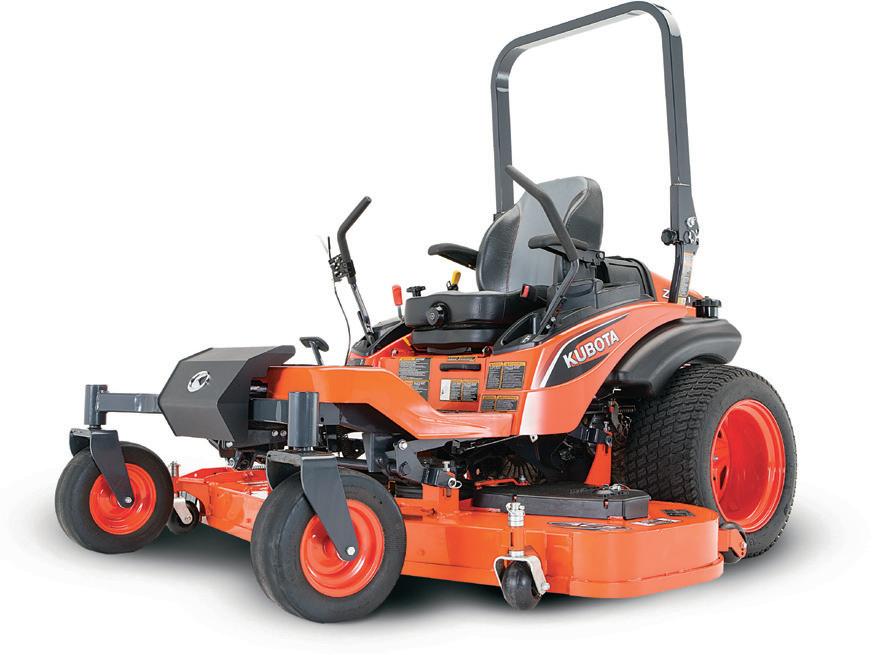

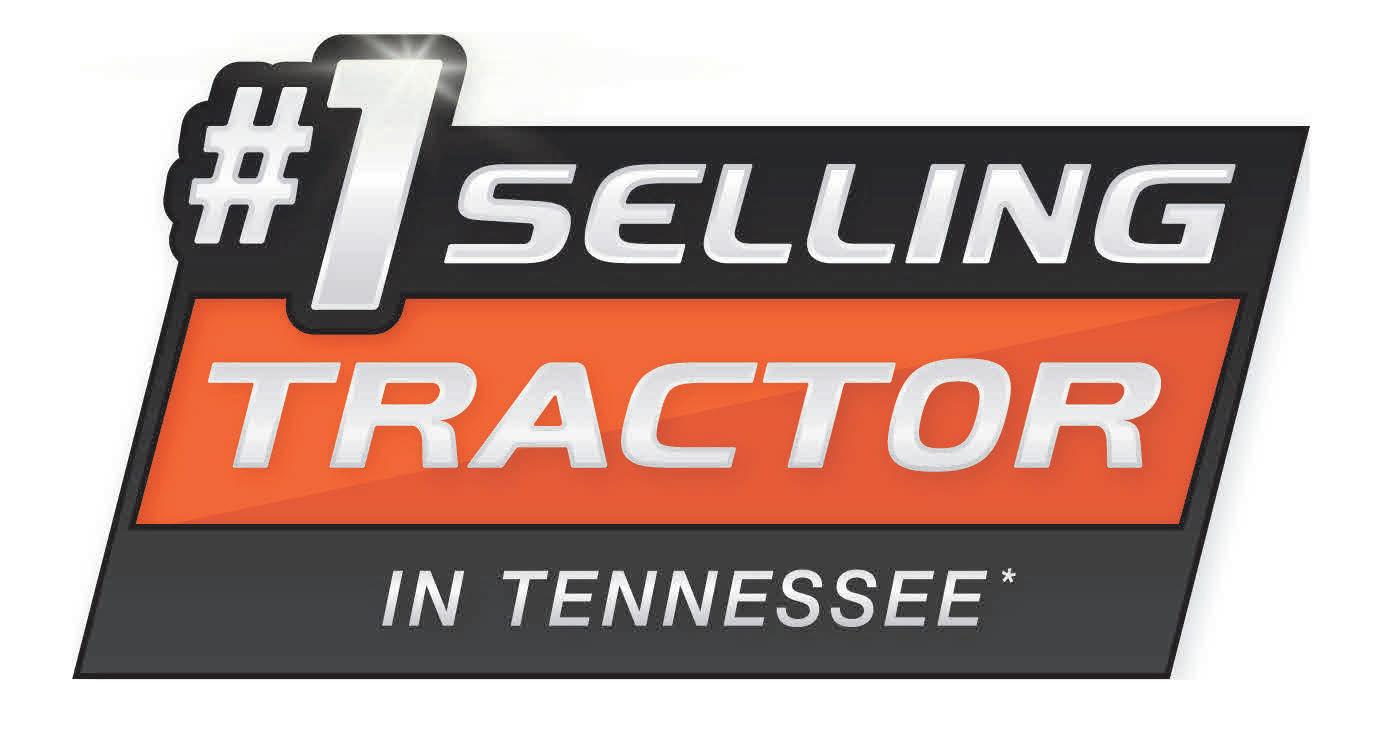
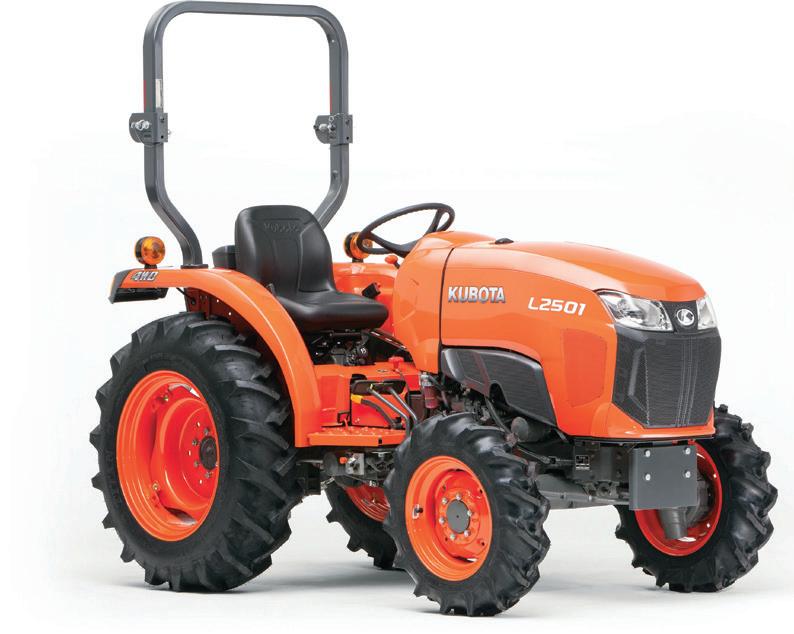
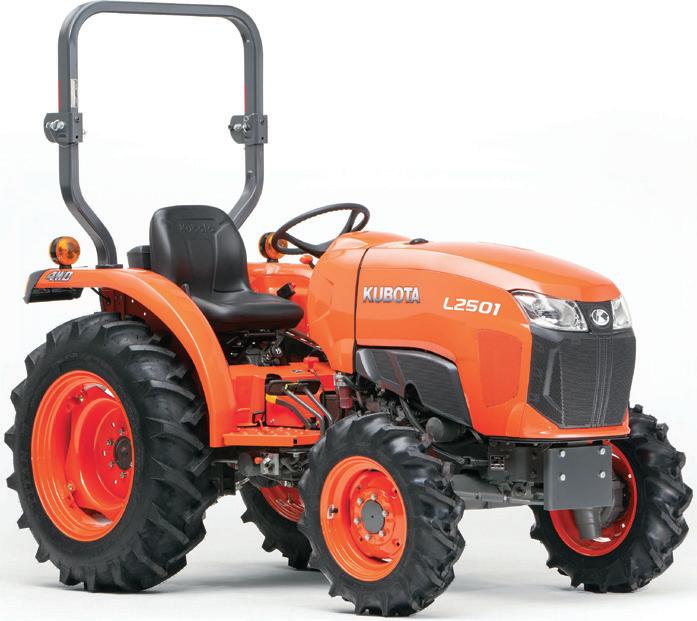
*Based on EDA/UCC Data from 01/01/2018 - 12/31/2022 for sales of new compact tractors 0-200 Hp in the state of Tennessee.

� SALES � SERVICE � PARTS INVENTORY
Z Series Mower
RTV
Sidekick
L Series Tractor
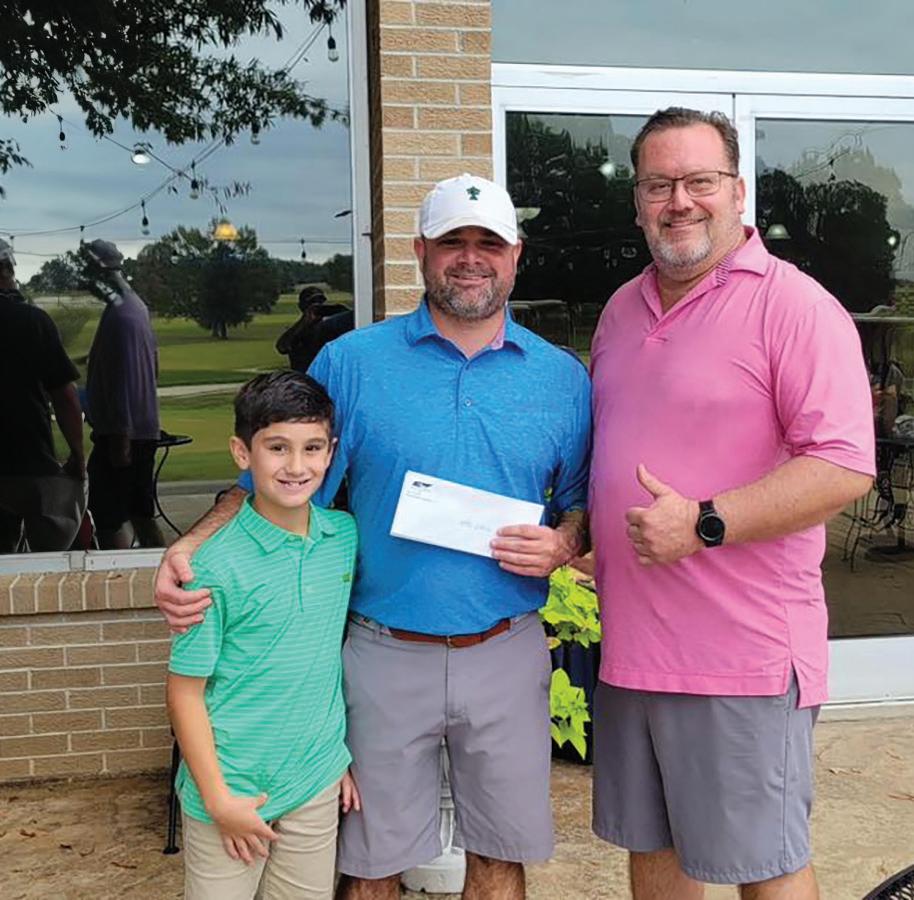
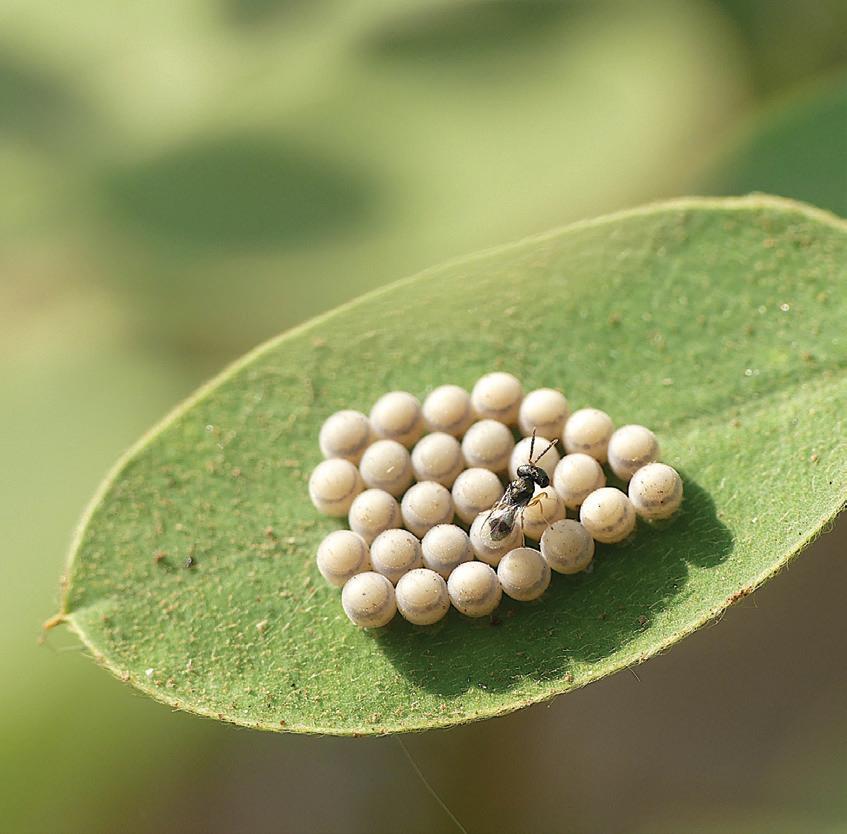

12
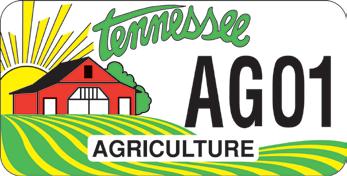
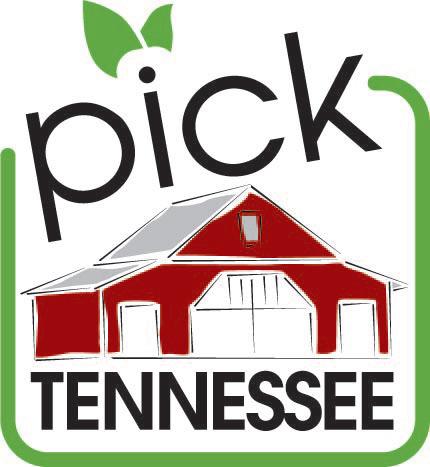
16
The Tennessee Nursery and Landscape Association serves its members in the industry through education, promotion and representation. The statements and opinions expressed herein are those of the individual authors and do not necessarily represent the views of the association, its staff, or its board of directors, Tennessee Greentimes, or its editors. Likewise, the appearance of advertisers, or their identification as Tennessee Nursery and Landscape Association members, does not constitute an endorsement of the products or services featured in this, past or subsequent issues of this quarterly publication. Copyright ©2024 by the Tennessee Nursery and Landscape Association. Tennessee Greentimes is published quarterly. Subscriptions are complimentary to members of the Tennessee Nursery and Landscape Association. Third-class postage is paid at Jefferson City, MO. Printed in the U.S.A. Reprints and Submissions: Tennessee Greentimes allows reprinting of material. Permission requests should be directed to the Tennessee Nursery and Landscape Association. We are not responsible for unsolicited freelance manuscripts and photographs. Contact the managing editor for contribution information. Advertising: For display and classified advertising rates and insertions, please contact Leading Edge Communications,
tennessee greentimes SPRING 2024 4
Suite 200, Franklin, TN 37064, (615)
Fax (615) 794-4524. Vol. 25/NO. 1 • Spring 2024 From the President 6 TNLA Sponsors 6 Welcome, New TNLA Members 8 Index of Advertisers 8 Industry News 9
COVER STORY RECENT EVENT
LLC, 206 Bridge Street,
790-3718,
DEPARTMENTS FEATURE
Biological Control in the Nursery Part 1: Predators, Parasitoids and Pathogens TNLA Golf Classic The Official Publication of The Tennessee Nursery and Landscape Association
8 Spotted Lanternflies Detected in Middle Tennessee
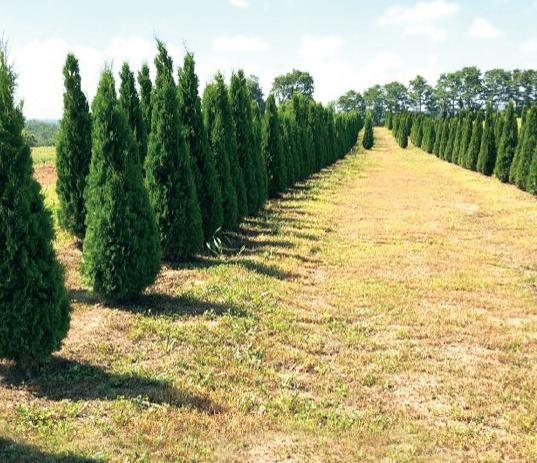
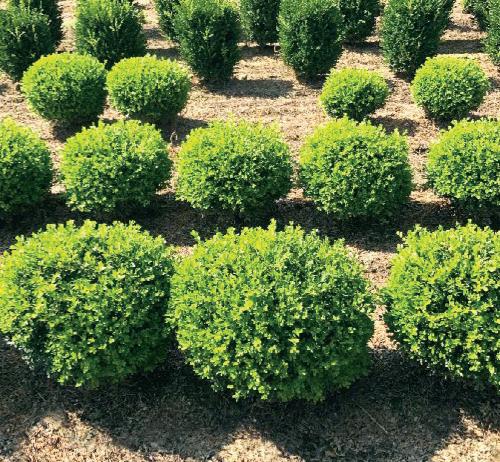

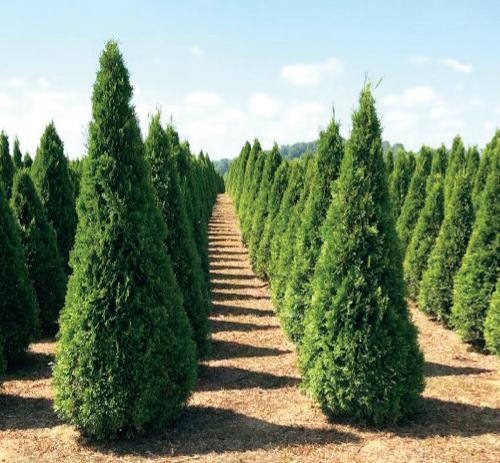
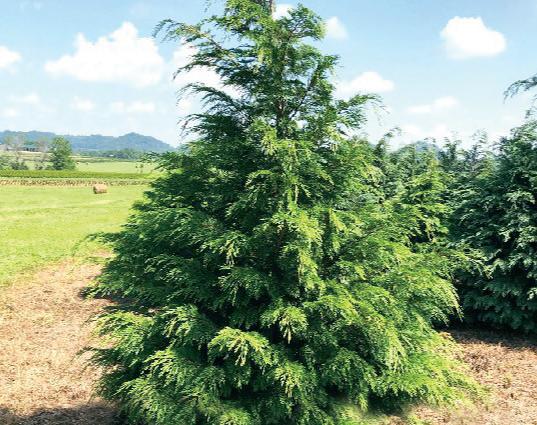
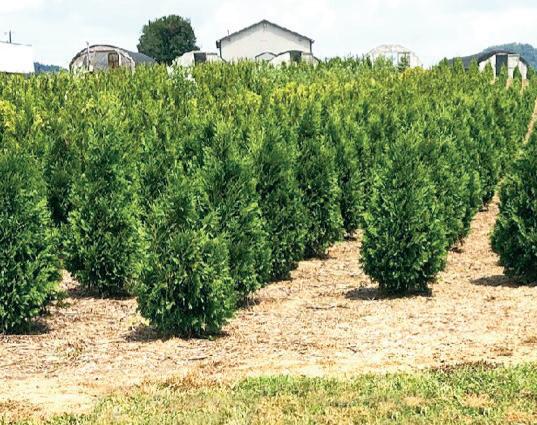
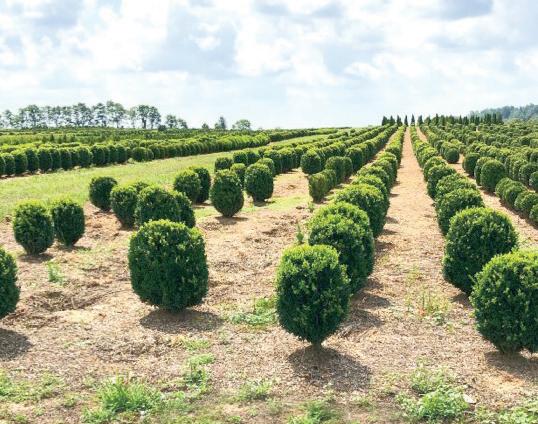
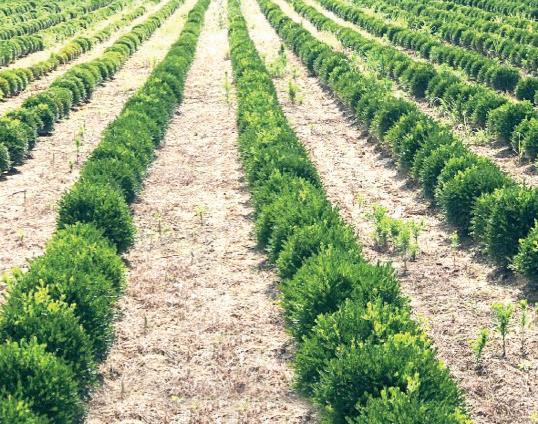

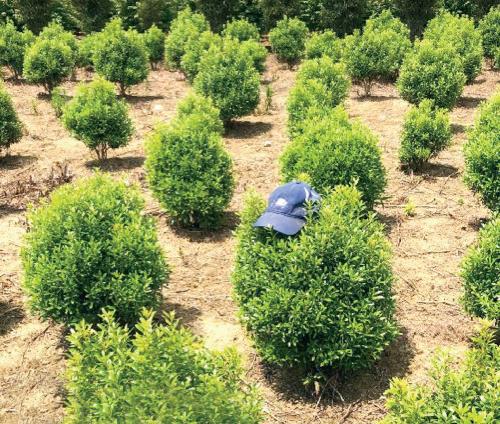
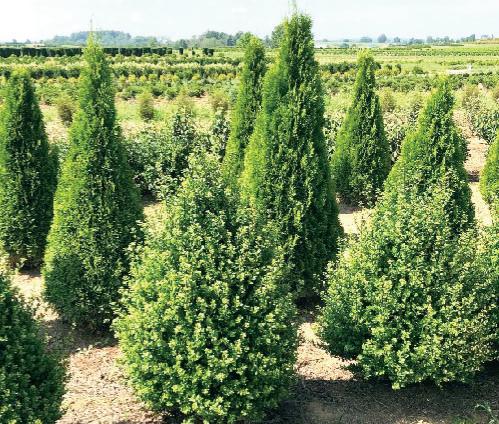

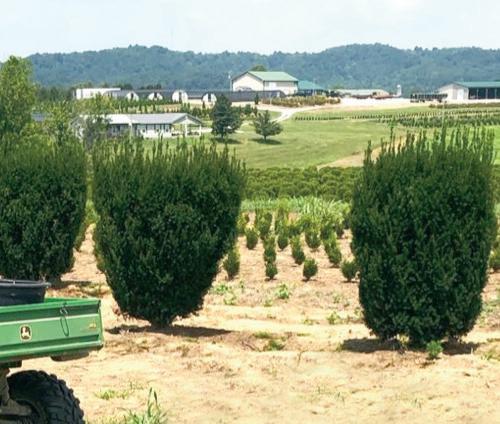
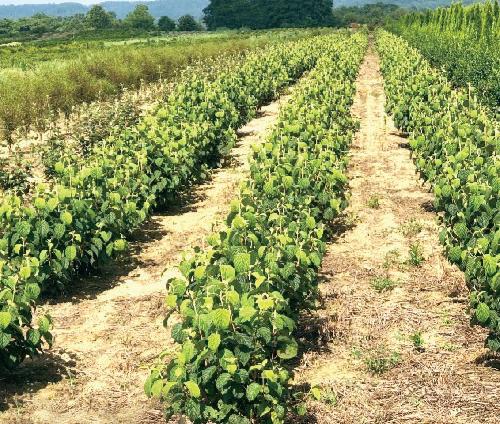
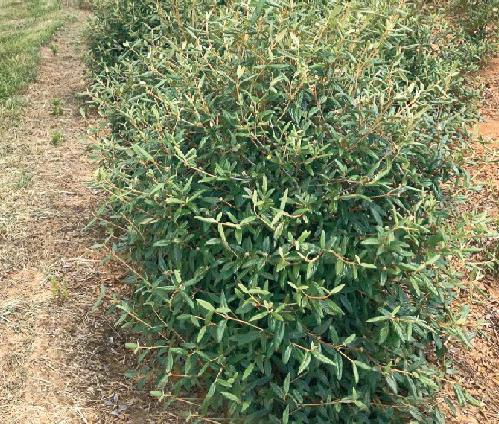

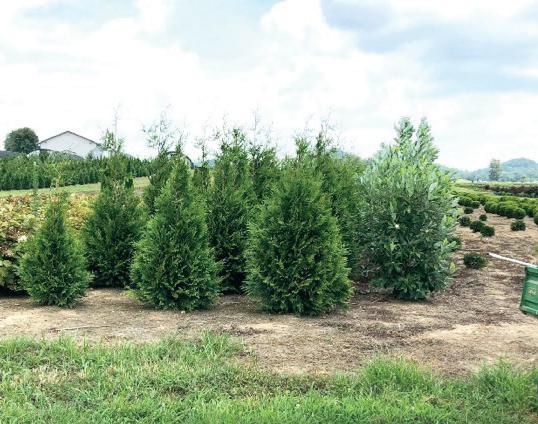
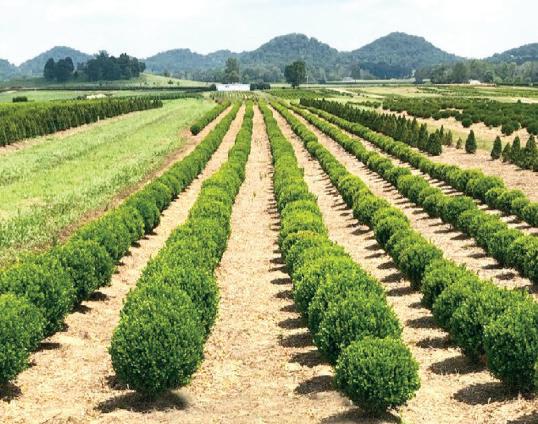
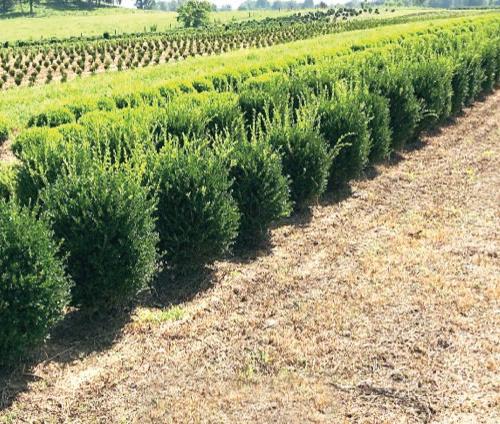
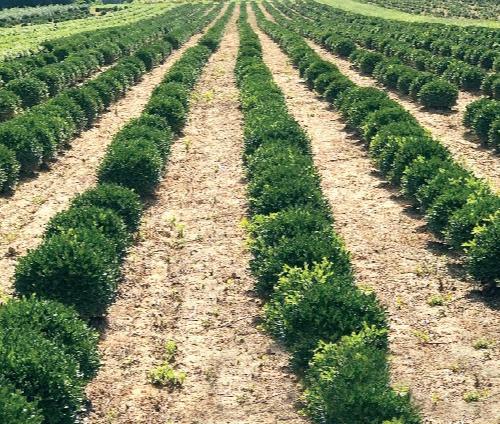
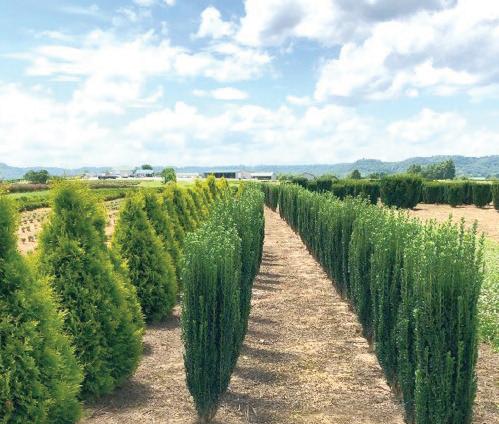


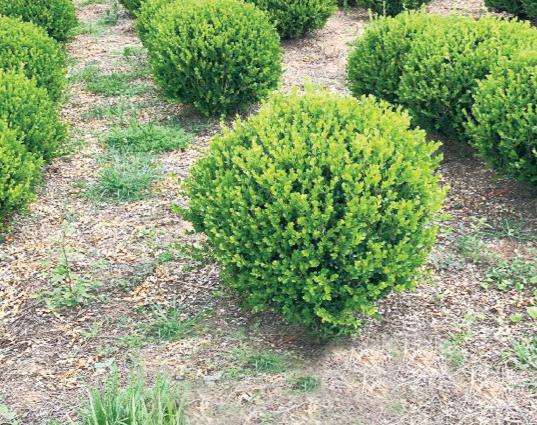
MIKE BROWN’S WHOLESALE NURSERY, LLC. • 525 HOLTZCLAW LANE • HUSTONVILLE, KY 40437 Member of the Boxwood Blight Cleanliness Program with University of Kentucky. OFFICE PHONE: 606-346-0863 • FAX: 606-346-2139 • MIKE’S CELL: 606-706-1620 EMAIL: brownsnursery@yahoo.com
North Pole Arb
China Girl Holly
Franklin’s Gem Boxwood
Winterthur Viburnum
Emerald Green Arb
American Boxwood
Green Giant & Nigra Arbs
Sullivan Cypress
Gem Box Inkberry
Nova Taxus
Green Mtn. Boxwood
Sprinter Boxwood
Excelsa Arb
Uptight Boxwood
Green Gem Boxwood
Steeds Holly
Popcorn Viburnum
Hicksi Taxus
Chicagoland Green Boxwood
Firelight Hydrangeas & Sprinter Boxwoods Densiformis Taxus
Pragense Viburnum
Wintergem Boxwood
Polar Gold Arb & Sky Pencil Holly
From the President

Exciting Changes Ahead
The Tennessee Greentimes is the official publication of The Tennessee Nursery & Landscape Association, Inc.
115 Lyon Street
McMinnville, Tennessee 37110 (931) 473-3951
Fax (931) 473-5883
www.tnla.com
Email: mail@tnla.com
Published By
Leading Edge Communications
WGOLD Membership Sponsors
TNLA would like to thank the following companies for being Membership Sponsors Arboras, LLC.
Barky Beaver Mulch & Soil Mix, Inc.
BASF
Blankenship Farms and Nursery
Botanico, Inc.
BWI of Memphis
Cam Too Camellia Nursery, Inc.
Delta Mulch and Materials, LLC
Enviro-Scapes, LLC
Flower City Nurseries
Mid-South Nursery
NYP Corp.
Randall Walker Farms
Riverbend Nurseries, LLC
Swafford Nursery, Inc.
Swift Straw
Tennessee 811
Tennessee Valley Nursery, Inc.
Turner & Sons Nursery
Warren County Nursery, Inc.
Youngblood Farms, LLC
SILVER Membership Sponsors
3F - Flanders Family Farm
Dayton Bag & Burlap Co.
Carpe Diem Farms
Cherry Springs Nursery
Kinsey Gardens, Inc.
Mid-South Nursery
Mike Brown’s Wholesale Nursery, LLC
Old Courthouse Nursery
Rusty Mangrum Nursery
Samara Farms
Scenic Hills Nursery
Woodbury Insurance Agency
hen I was in the Air Force, I had an old Colonel who used to tell me, “Jon, no good deed goes unpunished. And it’s better to be a volunteer than voluntold.” So, I’m back as your TNLA President. This organization, like many of your own businesses and lives, is undergoing a significant change in the way we do things. Louree Walker will transition from Executive Director to part-time Assistant Director then to retirement, while Danae Bouldin transitions from Assistant Director to Executive Director. We’re also working on several initiatives from the monthly newsletter to active social media campaigns highlighting our sponsors, to developing an industry job board, and publishing a new buyer’s guide.
This year we will re-invigorate our scholarship program which also includes an avenue for certain eligible projects for high schools. We want to promote our Field Day events and maximize attendance. There will be some great presentations and lots to learn and talk about with academic experts and people like you and I who are out there making it happen. We are working with American Hort on matters of national and regional significance and partnering with TSU’s Nursery Research Center to address our biggest concerns with pests and diseases. We are your direct advocates with the Tennessee Department of Agriculture. We correspond with, meet with, and participate with inspectors, policymakers, and the commissioner on a wide variety of issues from regulations to industry-wide promotions. TNLA is your leading green industry advocate statewide.
I look forward to the coming year and working with you and my fellow board members. We are hardworking people supporting hardworking people in the green industry. Remember, we are always looking for people willing to serve on committees and on the board. If you are interested in serving or if you have any questions or comments, please reach out to us at Danae Bouldin, Executive Director, mail@tnla.com / (931)473-3951.
Jon Flanders TNLA President
206 Bridge Street, Suite 200 Franklin, Tennessee 37064
(615) 790-3718
Fax (615) 794-4524
Email: info@leadingedge communications.com
Editors
Dr. Bill Klingeman
Dr. Amy Fulcher
Associate Editors
Dr. Karla Addesso
Dr. Becky Bowling
Dr. Nick Gawel
Dr. Midhula Gireesh
Dr. Nar Ranabhat
TNLA Officers
President
Jon Flanders
Botanico, Inc. & 3F - Flanders Family Farm
1st Vice President
Ozzy Lopez
Ozzy’s Lawncare and Hardscape Services
2nd Vice President
Sam Kinsey Kinsey Gardens
3rd Vice President
Trista Pirtle
Pirtle Nursery
Secretary-Treasurer
Bryan Tate
Mid-South Nursery
Associate Director
Todd Locke
BWI of Memphis
Ex-Officio
Terri Turner
Turner & Sons Nursery
Executive Director
Danae Bouldin
Jon Flanders
tennessee greentimes 6




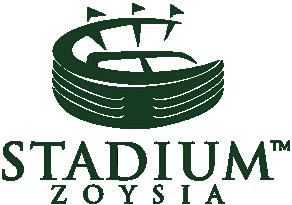

The Right Grass for Your Home Turf! Doug Estes 901-268-8803 PRESIDENT Bobby Winstead 901-867-8116 Whit Davis 615-405-3705 Chance Meredith 901-430-5620 While serving the entire Mid-South for the past 45 years, our goal continues to provide the highest quality, innovative turfgrass on the market today while providing the best customer service. winsteadturffarms.com Middle / East TN • Winstead Turf Farms, Inc. • 296 Bill and John Ln. • Hurricane Mills, TN 37078 • 615-405-3705 winstead-turf-farms-inc winsteadturffarm @winsteadturf winsteadturf COMING SOON West TN • Winstead Turf Farms, Inc. • 22860 Highway 196 • Arlington, TN 38002 • 901-867-8116 GOLF • ATHLETIC FIELDS • LANDSCAPES • HOME LAWN






Congratulations to these winners at our 2023 Golf Classic! Welcome New Members! Recent Event tennessee greentimes SPRING 2024 8 2nd Place Kelley Konstruction 4th Place Randall Walker Farms Closest to the Hole Liam Brock, Scenic Hills Nursery 1st Place Mid South Nursery 3rd Place Faron Green Nursery Closest to the Hole Eric Hill, Cultivate Sourcing Group Industry News Bowling’s Nursery, Inc. 19 www.bowlingsnursery.com Brown’s Nursery 5 Cam Too Camellia Nursery, Inc. 14 www.camtoocamellia.com Coosa Valley Turf Farms 11 www.coosavalleyturffarms.com Doug Young Nursery 19 www.dougyoungnursery.com Greene County Fertilizer Co. ............ 14 www.greenecountyfert.com H & R Agri-Power 3 www.hragripower.com Hoover & Son Insurance 10 www.hooverins.com John Holmlund Nursery 17 www.jhnsy.com King’s Industries 13 Pack Manufacturing Co. Back Cover www.packmanufacturing.com Richey Nursery Company, LLC 10 www.richeynursery.com Stowers Machinery Corporation Inside Front Cover www.stowerscat.com Surface Nursery Inc. 17 www.surfacenursery.com Tennessee 811 10 www.tnonecall.com Winstead Turf 7 www.winsteadturffarms.com Index of Advertisers Arboras, LLC. Guy Huskins P.O. Box 7222 McMinnville, TN 37111 Zimber Marketing Beau Chalene 6553 E Night Glow Circle Scottsdale, AZ 85266 Rainbow Ecoscience Dana Russell 11571 K-Tel Drive Minnetonka, MN 55343 TNLA would like to offer a special thanks to the sponsors of our Golf Classic. Thank you for supporting the Tennessee Nursery & Landscape Association, Inc. Botanico, Inc. BWI Companies, Inc. Cultivate Sourcing Group Dayton Bag & Burlap Faron Green Nursery Harrell’s, LLC. Heather Farms Nursery, Inc. Mid-South Nursery NYP, Corp. Parthenon Equipment Finance, LLC. Scenic Hills Nursery Sunset Transportation Tennessee Valley Nursery Turner & Sons Nursery
Congratulations to the 2022 and 2023 Graduates of the Tennessee Master Nursery Producer Program and Advanced Tennessee Master Nursery Producer Program
By Amy Fulcher, UT Extension Specialist and Professor

for Sustainable Ornamental
Plant Production and Landscape Management and Whitney Yeary, UT Extension Assistant
The Tennessee Master Nursery Producer (TMNP) and Advanced TMNP programs are professional development opportunities for nursery crop producers led by the University of Tennessee with support from the TDA, TSU and the USDA. They were the first programs of their kind in the nation and were designed to provide Tennessee nursery producers with up-to-date, sciencebased information with the goal of enhancing nursery profitability and environmental, economic, and community sustainability. Growers from across the state can access the latest information on production, irrigation, fertilization, pruning, propagation, pest management, economics, and marketing. Those in the Advanced TMNP program experience a core and elective module structure which enables them to complete the program by selecting modules with greater relevance to their business and focusing on topics such as advanced irrigation and water concepts, advanced pesticide application concepts, hydrangea production, and succession planning. New for 2024: social media and certain pest management modules are being updated!
• Growers who take the TMNP and Advanced TMNP learn! There is on average a 55.9% increase between pre-test and post-test scores for TMNP and a 38.7% increase between pre-test and posttest scores for the Advanced TMNP!
• Growers who take the TMNP acquire knowledge and skills that they can put into practice! More than 97% of graduates say they will adopt new practices as a result of information they learned in the TMNP!
• Growers who successfully complete the TMNP and Advanced TMNP are rewarded! Growers indicate they save $91.22 for every dollar spent on registration in the form of input cost savings or increase in crop value.
For more information, please visit the TMNP website: www.tnmasternursery.com.
If you have questions about the Tennessee Master Nursery Producer Program, please contact Dr. Amy Fulcher afulcher@utk.edu , 865-974-7152 . For questions about the TAEP, please contact Grant Pulse, producer.diversification@tn.gov, 615-837-5324
Participating in the TMNP and Advanced TMNP can also help the nursery industry as a whole. Recent comments from graduates on the state of the nursery labor supply include:
• “Don’t have everyone I need. It is begging. There are no workers. It doesn’t matter what you pay them, no one wants to work. For all nurseries this is our next huge problem.”
• “Terrible. Using H2A next year.”
• “Not 10 people standing in line to work at our nursery anymore. Using H2A since 2 years ago.”
These TMNP and Advanced TMNP program graduate comments along with listening session feedback helped UT and collaborating institutions successfully compete for a planning grant that supported a national nursery survey. Several resources that all Tennessee nursery producers can benefit from are based on the survey results, including three articles published in the Tennessee Green Times in 2022 – 2023”, UT extension publication “The Role of Automation in Addressing the Nursery Industry Labor Shortage: Current Automation Adoption” https://utia.tennessee.edu/publications/wp-content/uploads/sites/269/2023/10/W1147.pdf, and this comprehensive article in HortScience “Overcoming the nursery industry labor shortage: A survey of strategies to adapt to a reduced workforce and automation and mechanization technology adoption levels” https://doi.org/10.21273/HORTSCI17230-23
Congratulations to the 2022 and 2023 Tennessee Master Nursery Producer Program graduates!
2022
Advanced TMNP Program Graduates
Powell Dykes
Dykes and Son Nursery
Jonathon Flanders
Botanico, Inc. & 3F - Flanders Family Farm
Tim Gann
Gann Nursery
Joey Haston
Haston Farm Nursery
Brent Myers
Steve Myers and Son Nursery
Steve Wanamaker
Tennessee Bush Farms
Tim Wanamaker
Wanamaker Nursery
Charles Yancy
Don Yancy & Sons Nursery
Tennessee Master Nursery Producer Program
Graduates
Nathan Bouldin
Cherry Springs Nursery
Pauline Steffes
Jared Wanamaker
Skyview Farm and Nursery
2023
Advanced TMNP Program Graduates
Steve Jones
Greenwood Nursery
Pat Wilcher
Wilcher’s Nursery
Tennessee Master Nursery Producer Program
Graduates
Astrid Buchanan
Acorn Nursery
Danielle Caudle
Fleur de Lis Farm TN
Valerie Elton
Knox County School System
Morgan Evans
Evan’s Plant Farm
Dawn Kelly
Maplewood Farms
Celia Max
Maximum Blooms Cut Flower Farm
Christopher McCormick
Botanico
Bradford McDowell
McDowell Nursery
Justine Moreau
Roots and Boots
Fred Shadow
Tennessee Valley Nursery
Franklin Wells
tennessee greentimes SPRING 2024 9


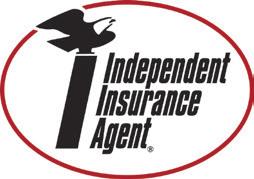
“The more than one company agency”
FRED LEE HOOVER
Economic Corner
Key Economic Factors Impacting the Green Industry
By Alicia Rihn, PhD Assistant Professor, Univ. Tennessee Department of Agricultural and Resource Economics
Prospects for profitability in the Green Industry closely follow the performance of the US economy. Typically, when the economy is doing well, the Green Industry is doing well and vice versa. There are multiple metrics of the economy that can be indicative of how the Green Industry is performing at any point in time. Some metrics to pay close attention to are the Gross Domestic Product (GDP), Leading Economic Index (LEI), and Housing Starts. Each of these components gives an indication of the US economic health and should be viewed in the long-term rather than at just one point in time. Viewing the historical data allows for the perspective of what is currently happening and what may occur moving forward based on past performance.
The GDP is an indicator of the overall health of the economy. During the pandemic (2020 – 2021), the GDP dropped sharply and then quickly rebounded (Fig.1; gray line). Since 2022, the GDP has somewhat normalized and remained within historically normal ranges. As of December 21, 2023, the GDP was at 4.9%. Closely related to the GDP is the Leading Economic Index (LEI; Fig.1 blue line) which is based on 10 economic indicators and reflects economic activity. An upward trend in the LEI indicates economic expansion, while a downward trend indicates a recession. Currently, the downward trend in the LEI is acting as an indicator of a recession. Partially based on the LEI and GDP, the Conference Board, an organization of about 40 business executive members,
tennessee greentimes SPRING 2024 10
HOOVER & SON INSURANCE “Since 1901” 114 S. COURT SQUARE • P.O. BOX 669 M c MINNVILLE, TN 37111 (931) 473-2200 • CELL (931) 212-9856 E-Mail: hooverins@blomand.net • www.hooverins.com
Industry News continued
is predicting is predicting a short, shallow recession in the first half of 2024.
Another economic indicator that greatly impacts the Green Industry is the housing market, because when people build or buy houses they often install, update, or add to the landscaping. Housing starts in 2023 have been less than in 2022. Part of this decrease is attributed to rising mortgage rates (at 6.6% as of 1/8/2024) and limited supply of available inventory. However, despite this decrease, there is an unmet need for new houses. It is estimated that 1.7 million new housing starts per year are needed in the U.S. to meet housing demands through 2030 (Census Bureau, RSM US, 2023).
Demographics of US residents also favor future advances in the housing market. This is because the median age of first-time home buyers is 33 years old and Millennials (born between 1981 and 1996) are the primary drivers of first-time home purchases (National Association of Realtors [NAR], 2023). Currently, 52% of Millennials own homes (U.S. Census Bureau, 2023) and contribute to about 28% of home purchases between 2021 and 2022 (NAR, 2023). Baby Boomers (born between 1946 and 1964) comprise the largest portion of home buyers at 39% in that same timeframe, due to their accumulated wealth that afforded this group the ability to purchase during a time of higher home market prices. Although there was a decrease in housing starts in 2023, the number and buying power of Millennials set the stage in which there will likely continue to be high demand for new houses (and landscapes) projected for the upcoming five years.
When considering the potential impacts on the Green Industry, the best strategy is to stay tuned to trends in the GDP, LEI, and housing starts to better understand what is occurring in the economy, and to gauge how those trends may impact the Green Industry. If you are interested in staying up to date with these economic indicators, the www.tradingeconomics.com website provides the GDP, housing starts, and many other indicators. The LEI is available at www.conference-board.org . Regardless of the metric you are following, keep in mind the long-term trends because the economy is continually changing, and by looking at these indicators in context to their past trends in performance, we can better understand our current and future positions.


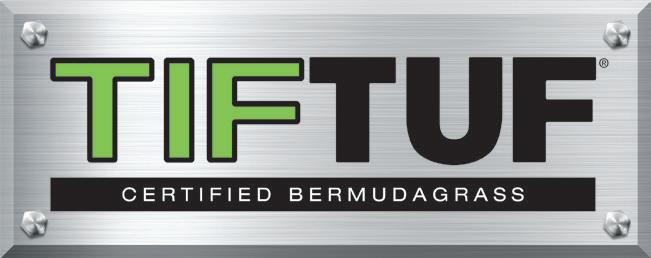
FESCUE TIFWAY 419 COOSA VALLEY TURF FARMS LLC GROWERS OF QUALITY TURF SINCE 1987 www.CoosaValleyTurfFarms.com (256) 927-4228 • (256) 927-4758 FAX • cvtf@tds.net 900 County Road 492 • Centre, AL 35960 MEMBER OF
Source: The Conference Board (2023)
Figure
1. Gross Domestic Product (GDP) and Leading Economic Index (LEI).
Biological Control in the Nursery
Part 1: Predators, Parasitoids and Pathogens
By Alfred Daniel J, Kripa Dhakal, and Karla M. Addesso Tennessee State University, Otis L. Floyd Nursery Research Center
Natural enemies of plant pests include predators, parasitoids, and pathogens. These organisms prevent pest populations from reaching outbreak levels in nature. In agriculture production, we often refer to these organisms as biological control agents to differentiate them from chemical controls. In this series, we will discuss the different types of biological control and how nurseries can incorporate biocontrol principles and agents into their production practices.
Friend or Foe?
Not all insects are pests. In fact, of more than one million described insect species, only about 1% are considered serious pests. What about the rest? Some insects help us by keeping pest populations in check. Insects that feed on other insects, often referred to as natural enemies, are classified as either predators or parasitoids (Figures 1–16). Predators actively hunt and feed on other insects. Parasitoids lay eggs on or in other insects. Their young feed on the host insect, eventually killing it and later emerging in their adult form. The difference between “parasitoids ” and the more familiar “parasites ” is that a parasitoid kills its host, while a parasite will leave its host alive.




























Cover Story tennessee greentimes SPRING 2024 12
1 2c 2a 3a 3c 4 2b 3b 5a 5b 7a 6a 7b 6b 8 9a 11 9b 12 10 13a 13b 14b 13c 15a 14a 15b 16
Figures 1 to 16. Fig 1. A predatory mite Fig 2a. Salticid spider Fig 2b. Tetragnathid spider Fig 2c. Oxyopid spider Fig 3a. Lady beetle adult Fig 3b. Lady beetle larva with aphids, Fig 3bc. Larva of a different lady beetle species Fig 4. Tiger (ground) beetle Fig 5a. Soldier beetle adult Fig 5b. Soldier beetle larva Fig 6a. Phymata assassin bug adult Fig 6b. Macracanthopsis assassin bug nymph Fig 7a. Syrphid fly larva Fig 7b. Adult syrphid fly Fig 8. Robber fly adult Fig 9a. Lacewing adult Fig 9b. Lacewing eggs on a leaf edge Fig 10. Preying mantid Fig 11. Vespid wasp Fig 12. Tachinid parasitic fly Fig 13a. Megarhyssa Ichneumonid wasp Fig 13b. Braconid wasp adult Fig 13c. Braconid wasp pupae (white balls) on a caterpillar cadaver Fig 14a. Acroclisoides (Chalcidoid) wasp parasitizing eggs Fig 14b. Platygastroid wasp parasitizing eggs Fig 15a. An ant infected by Ophiocordyceps fungus Fig 15b. A fly cadaver infected by Entomophthora fungus Fig 16. A caterpillar cadaver infected by baculovirus.
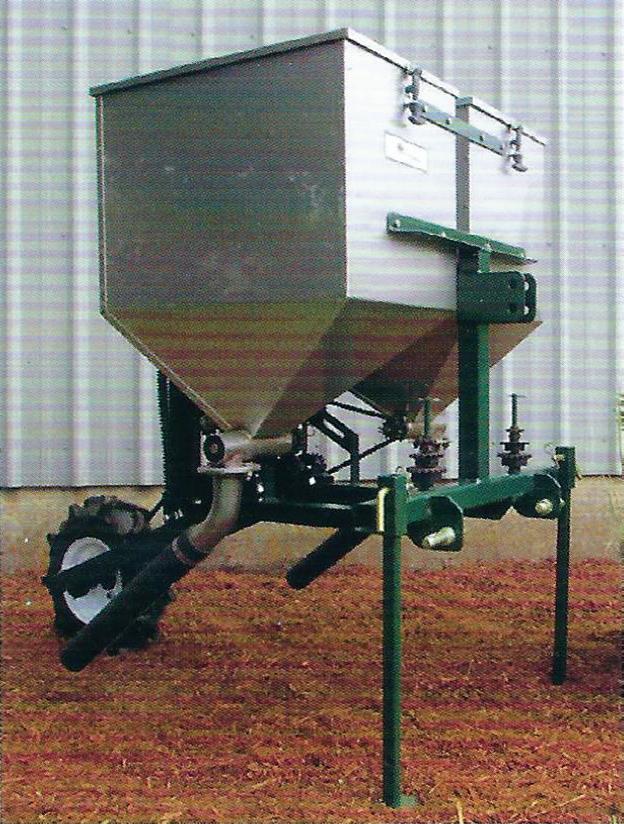
16
12
Mounts
24”
Adjustable
Ground
Four
Stainless
36”
Pneumatic gauge wheels
Works great for planting covercrop with seeder

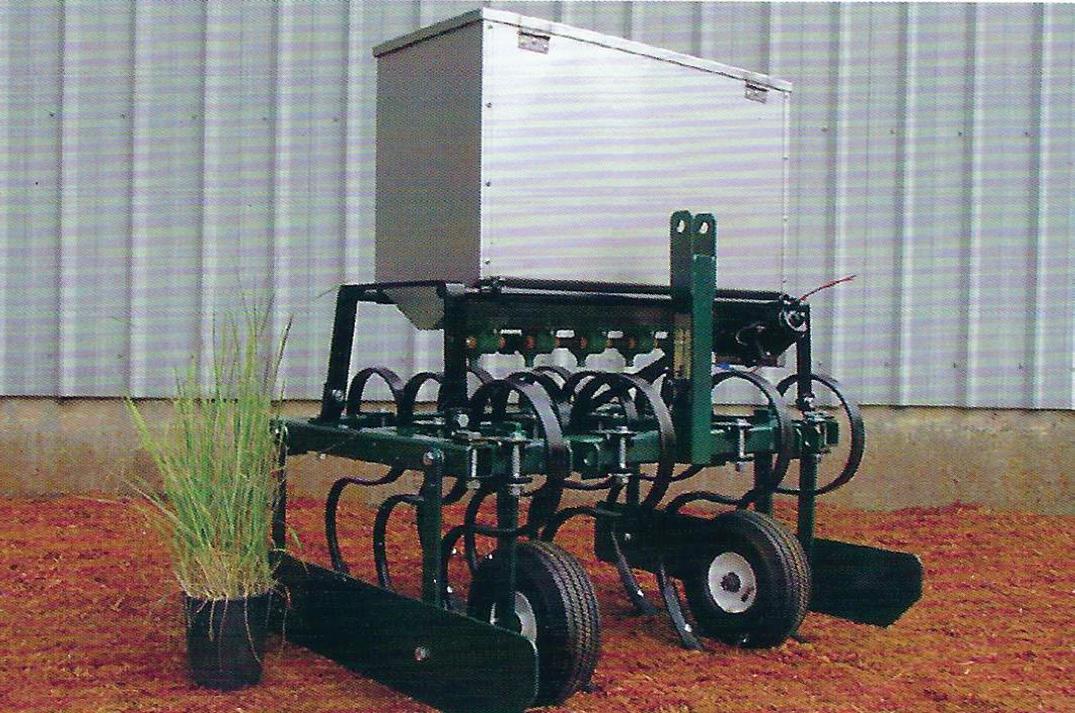
Greasable
Shovel
12,
Four
2
POUNDS PER 1000 ft OF ROW 30 24 18 14 TEETH PER SOCKET 9 12 15 18 500 lb. capacity
from 36" – 72" wide
drive for consistent application
for positive height adjustment
Linkage
easy change sprockets
feed rate adjustment
for
steel hoppers and metering system Approximate feed rates: 16-16-16 CUSTOM METAL FABRICATION & REPAIR ALL EQUIPMENT COMES WITH DURABLE POWDER COATING 14377 Whiskey Hill Rd. Hubbard, OR 97032 FAX 503-981-4985 Building Quality Nursery Equipment since 1989 503-981-7517 KD16 TANDEM KF FERTILIZER SIDEDRESSER KTC-36 CULTIVATORS
STAINLESS COVERCROP SEEDERS
KS
gauge stainless
feed control
Adjustable
volt electric drive
on KTC cultivator or KD disc
30” models
or
standard
width Side shields float
SOLD SEPARATE INCREASE PROFITS WITH THE SPEED OF A DISC VERSUS A TILLER. SIZES FROM 34" – 40"
agriculture disc bearings
eliminates center line
16" notched blades
adjustable cutting angles Metal float in rear
1/2 square tube frame
side shields contain soil
sizes up to 60"
Adjustable
Custom
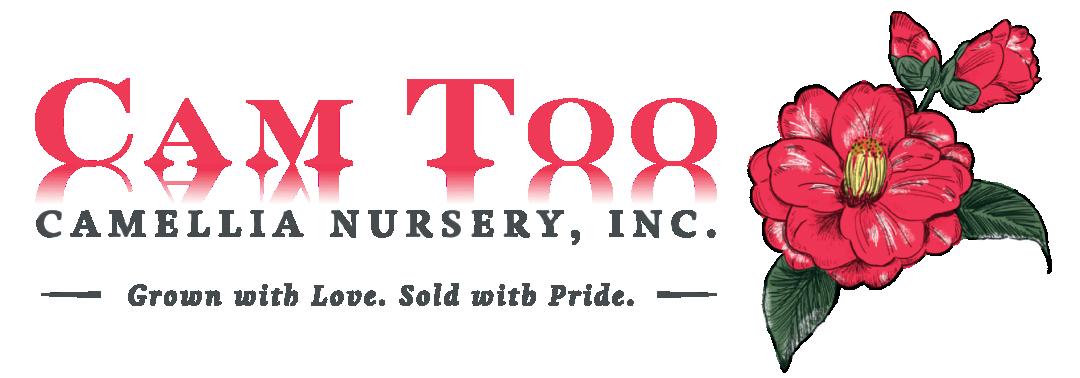
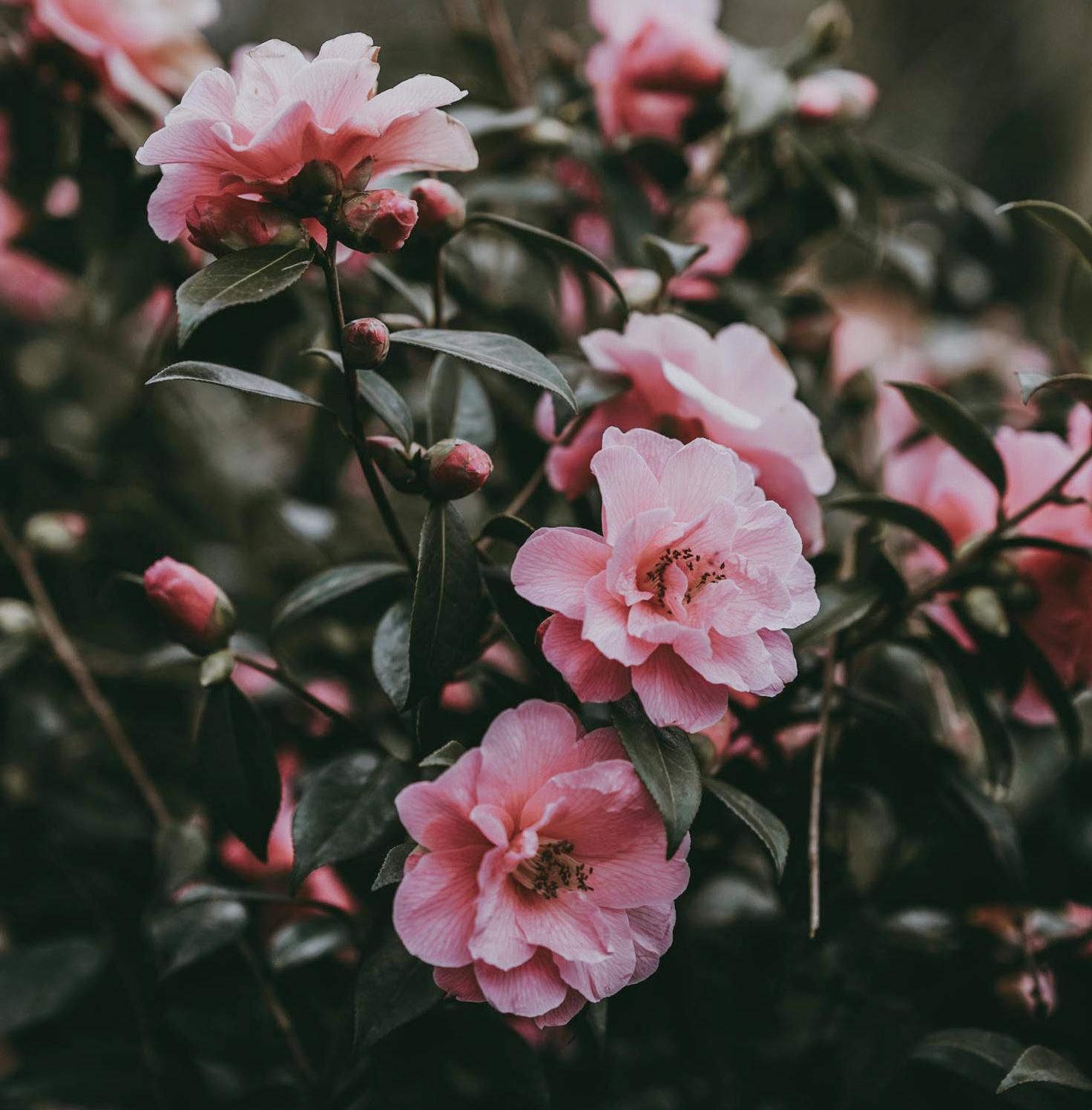

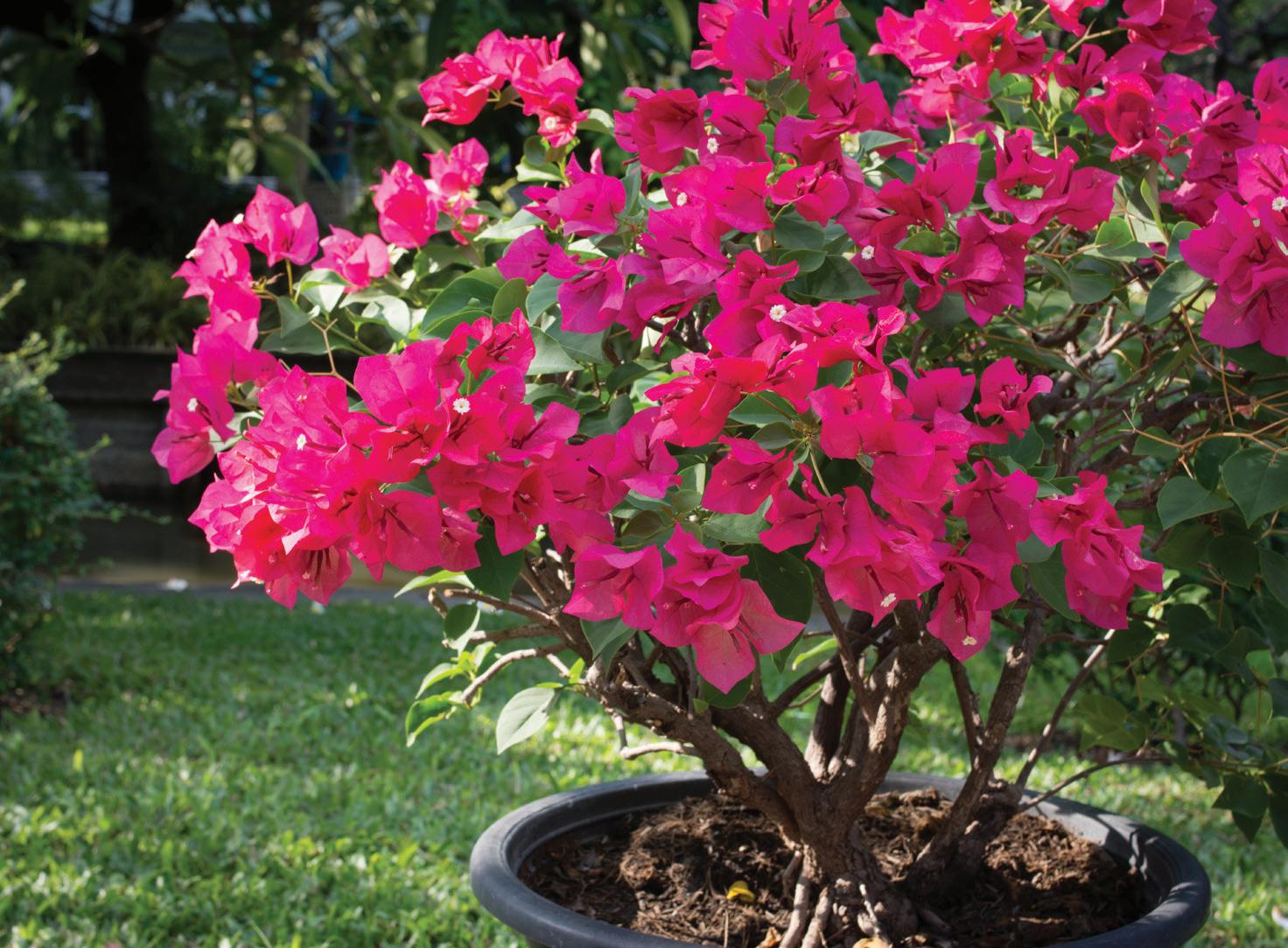
The death of the infested host is what makes parasitoids effective as biological control agents. There are thousands of other non-insect biocontrol agents such as spiders, predacious mites, bats, and birds that all contribute to pest control. Entomopathogenic agents, including fungi, nematodes, viruses, or bacteria, are yet another important group. These biocontrols are comprised of living or killed strains of microorganisms that cause disease development in a variety of arthropod pests.
Common Biological Control Agents in the Nursery System
The main categories of biological control agents can be described within three broad functional groups: predators, parasitoids and pathogens (Table 1). Within the predator group, there are eight orders of arthropods that act as biological control agents in nursery systems. These predator groups include mites, spiders, and several orders of insects (beetles, wasps, lace wings mantids, etc.). As previously discussed, adult parasitoids lay eggs in or on their hosts. The two main insect orders containing parasitoids are flies and wasps. Parasitoid wasps, lace wings (green lace wings in particular), and predatory mites are the three groups that have been successfully developed into commercially available biological control agents and are used widely in greenhouse production.
Plant pests, like us, also can become sickened by disease. Diseases affecting insects, known as entomopathogens, include naturally occurring microorganisms such as fungi, protozoa, viruses, nematodes, or bacteria that are specific to insects (Table 1). Often these diseases can be very specific to a narrow range of insect pests, for example infecting caterpillars but not flies or beetles. Some species and strains of entomopathogens can be produced and formulated as active ingredients in pest control products. These “microbial pesticides” are composed of living or killed strains of microorganisms that directly or indirectly impact pest survival. These strains can generally be applied to crops with the same sprayer technology as chemical pesticides. These products are often most effective when applied early to prevent pest outbreaks, not to clean up heavy infestations after they appear.



In Part 2 of this series, we will discuss ways to promote biological control agents in the nursery by conserving and promoting what is already present in the local environment and methods for augmenting natural populations of predators, parasitoids, and pathogens.
Cover Story continued (800) 758-8121 | CamTooCamellia.com 805 OAKBURY COURT | GREENSBORO, NC 27455 Cold Hardy Zone 6 | Cold Tolerant Zone 7 | New Hybrids Zone 8 & 9 Liners and 1, 3, 5, 7 | 15 and 20 Gallons Available | Wholesale Only . MFR/HQ: Greensboro, GA MAKE YOUR LANDSCAPES SHINE! GreeneCountyFert.com MFR Buy/Ship Direct • We have the best selection of product options in stock and ready to ship. 4-0-2 FloraGreene™ Tree, Shrub, Palm, Plant, Garden & Ornamental Fertilizer
Arachnida
Phytoseiidae (Predatory Mites)
Araneae (Spiders)
Coleoptera (Beetles)
Predators
Insecta
Parasitoids Insecta
Hemiptera (True Bugs)
Diptera (Flies)
Phytoseiidae (Predatory Mites)
Salticidae, Tetragnathidae, Oxyopidae etc.
Coccinellidae (Lady Beetles or Ladybugs)
Carabidae (Ground Beetles)
Cantharidae (Soldier Beetles)
Reduviidae (Assasin Bugs), Anthocoridae (Minute Pirate Bugs), Geocoridae (Big-eyed Bugs), etc.
Spider mites, broad mites, whitefly, thrips, insect eggs both as adults and larvae. (Fig. 1)
Generalists, particularly of larger bodied insects, both as adults and larvae. (Fig 2. a, b & c)
Aphids, mealybugs, and scale insects both as adults and larvae. (Fig. 3a, b & c)
Generalist predators of insects and snails both as adults and larvae. (Fig. 4)
Adults eat aphids while their soil-dwelling larvae eat beetle and moth eggs and larvae. (Fig. 5a & b)
Adults and nymphs are generalist predators. (Fig. 6 a & b)
Syrphidae (Hover Flies) Larvae are aphids predators. (Fig. 7a & b)
Asilidae (Robber Flies)
Adult flies are generalist predators. (Fig. 8)
Neuroptera Chrysopidae (Green Lacewings) Larvae feed on soft bodied insects. (Fig. 9 a & b)
Mantodea Mantidae (Preying Mantids)
Hymenoptera (Wasps) Vespoidea (Wasps)
Diptera (Flies) Tachinidae
Superfamily (SF) Ichneumonoidae
Hymenoptera (Wasps)
(SF) Chalcidoidea
(SF) Platygastroidae
Clavicipitaceae
Pathogens Fungi Hypocreales
Cordycipitaceae
Entomophthoraceae
Adults and nymphs are generalist predators. (Fig. 10)
Adult wasps hunt caterpillars as food for wasp larvae in nests hunt caterpillars to provide their nests with food (Fig. 11).
Adults lay eggs on host moth caterpillars and beetle grubs (e.g., Istocheta aldrichi on Japanese beetle white grubs). (Fig. 12)
Several Family-level taxa of usually large-sized wasps that parasitize larvae, including of woodboring beetles. (Fig. 13 a, b & c)
Several Family-level taxa of small-sized wasps. Many species lay their eggs inside the egg stage of pests, thereby delivering fast and efficient pest control (Fig. 14 a (chalcidoid wasps); Fig. 14 b (platygaststroid wasps).
Family-level taxa of fungi (e.g., Metarhizium spp.) that can infect beetles, root weevils, thrips and grasshoppers.
Family-level taxa of fungi (e.g., Beauveria bassiana) that can infect whiteflies, aphids, thrips, grasshoppers and beetles Family-level taxa of fungi (e.g., Beauveria bassiana) that can infect whiteflies, aphids, thrips, grasshoppers, and beetles, (Ophiocordyceps sp. (Fig. 15 a) that can infest ants. and (e.g., Isaria fumosorosea) that can infect caterpillars, aphids, whiteflies, and mites.
Family-level taxa of fungi (e.g., Entomophthora spp.) that infects flies and other insects (Fig. 15 b).
Nosematida Nosematidae Microsporidia are spore-forming unicellular parasites (e.g., Nosema spp. that parasitize different insects.
Ovavesiculida Ovavesiculidae
Microsporidia pathogen Ovavesicula popilliae infects both Japanese beetles larvae and adults.
Eugregarinida Actinocephalidae Stictospora spp. infects a wide range of grubs, including Japanese beetle
Bacteria Bacillales Bacillaceae
Rickettsiales Ehrlichiaceae
Virus Baculovirales Baculovirus
Heterorhabditidae
Nematoda Rhabditida
Steinernematidae
Bacillus thuringiensis subspecies infect different groups of insects. kurstaki (Btk), caterpillars; aizawai (Bta), caterpillars; israelensis (Bti), mosquitoes
Wolbachia is a symbiotic bacterium that occurs naturally in many insects. It induces egg-sperm incompatibility called cytoplasmic incompatibility and serves as a method for controlling insect pest populations.
Nuclear polyhedrosis viruses (NPV) and granuloviruses (GV) can infect caterpillars (Fig. 16)
Heterorhabditis spp. infect several soil-dwelling white grubs, root weevils, as well as caterpillars. Steinernema spp. infect several orders of dwelling pests including thrips and grubs.
tennessee greentimes SPRING 2024 15
Class
Functionality
Order Families Targets
Table 1. List of biocontrol agents and their targets.

Spotted Lanternflies Detected in Middle Tennessee
By Midhula Gireesh, Assistant Professor, Entomology and Plant Pathology Department, UT Extension, and Cindy Bilbrey, State Entomologist, Tennessee Department of Agriculture





What is spotted lanternfly?
The spotted lanternfly (SLF), Lycorma delicatula (White), is a nonnative planthopper in the Family Fulgoridae that was first detected in the United States in Pennsylvania in September of 2014 (Fig. 1). SLF is native to China, India and Vietnam and has been introduced into Korea, Japan and Taiwan (1,4). Since its initial detection in the U.S., SLF has been confirmed in other states such as New Jersey, Virginia, Delaware, West Virginia, Maryland, Connecticut, New York, Ohio, Indiana, Massachusetts, and North Carolina (3). Recently several other states have confirmed SLF, as well. An up-to-date information can be accessed at: https://lookerstudio.google.com/reporting/b0bae43dc65f-4f88-bc9a-323f3189cd35/page/QUCkC
In September 2023, the Tennessee Department of Agriculture confirmed detection of SLF in Davidson and Wilson Counties in middle Tennessee. Among SLF life stages, adult SLF and their egg masses are the most common hitchhikers that are associated with transportation by humans. These also are the most common forms of long-distance SLF dispersal (5). In Tennessee, SLF adults were found near a railroad track in Davidson County where train cars are often held idle for a few days before resuming progress toward their planned destination. It is possible that an egg mass that was attached to a train car hatched at that location and then nymphs were able to locate a suitable host plant on which to complete their life cycle.
How can you identify spotted lanternfly?
Adult SLF are approximately 1 – 1.5 inches long and have beige or grey front wings with black dots and dashes. The hind wings are especially colorful with a band of red, white, and black, visible when the front wings are spread (Fig. 2). Nymphs (juveniles) in their first, second and third instars are black with white spots. Fourth instar nymphs are red and black with white spots. The egg masses are brown with a gray waxy covering and may contain up to 60 eggs (Fig. 3).
What is the life cycle of spotted lanternfly?
Adult SLF emerge in late summer and aggregate on host plants to feed. After mating in September, female SLF begin laying egg masses on host plants and other surfaces (Fig. 4). Egg laying continues into November. In middle Tennessee, egg masses were found on railroad ties, under rock ledges, on tree of heaven, bush honeysuckle, poison ivy, downed tree limbs, and logs. Egg masses were also found under peeling tree bark, in hollow trees, and on the undersides of plywood and lumber. Reports from other states include egg laying onto smooth surfaces such as tree trunks, fence posts, rusted steel, cut stone, and other incidental objects, like cars and outdoor furniture (2).
Egg masses overwinter and then first instar nymphs begin emerging in May. Nymphs mature to the second and third instar (stage) in June and July, and molt into the more colorful fourth instar in July (3). SLF nymphs molt into their winged adult form in mid-summer. Adults will feed on host plants until females complete laying eggs in late November (3).
What does feeding damage look like?
What is the economic impact?
SLF use piercing-sucking mouthparts to ingest plant nutrients. Tree of heaven, Ailanthus altissima , a tree native to China, is the preferred plant host (2). First through third instars, however, will feed on the tender plant tissue of a broad range of host plant species.
tennessee greentimes SPRING 2024 16
4 3 2 1 Feature
Fig. 1. Spotted Lanternfly adult. Fig. 2. Spotted Lanternfly adults found in Davidson County. Fig. 3. Egg masses are brown with a gray waxy covering. Fig. 4. Spotted Lanternfly egg masses from Davidson County. (Figs. 1, 3 & 4 courtesy of Alfred Daniel J., TSU Otis L. Floyd NRC Postdoctoral Researcher).


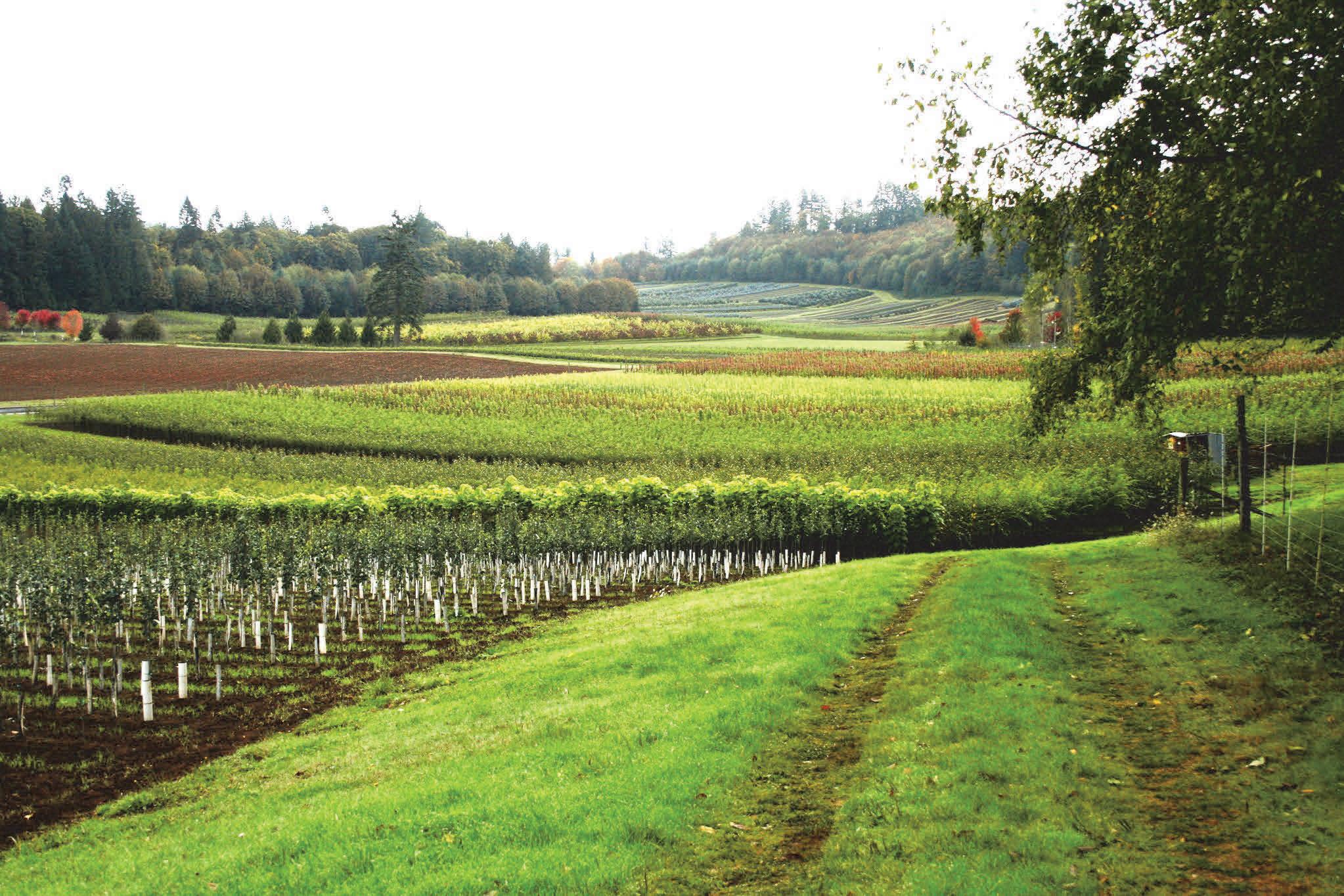

The fourth instar nymphs and adults tend to have a narrow host range, with the preferred hosts being tree of heaven, grapes (Vitis spp.), black walnut (Juglans nigra), silver maple (Acer saccharinum), red maple (Acer rubrum), and willow (Salix spp.) (1,7).
The economic impact from SLF to key host plant commodities can be direct or indirect. Direct damage involves plant decline, stem flagging, and branch dieback that can occur when a large number of adults feed on a single tree. In Pennsylvania, flagging on black walnut has been observed. Instances of other host plant mortality due to SLF feeding have not yet been reported (6). In vineyards, however, up to 90% loss of grape yield and reduced fruit quality have been reported, with surviving vines failing to set fruit (2,3). Both the adults and nymphs excrete a sugary substance known as honeydew. The growth of sooty mold on honeydew blackens tree trunks and any surfaces that are beneath feeding SLF populations. This make SLF a nuisance pest in landscapes and to homeowners.
How can we manage spotted lanternflies?
Circle traps and sticky bands have been utilized for monitoring SLF. Mechanical removal of spotted lanternfly, particularly in the egg mass stage, has been recommended as a control option. Recent studies using exclusion netting have reduced SLF populations by 99.8% in grape vines (7). Trained canines can detect both new and one-year-old egg masses with an accuracy of at least 90%. Canines can detect spotted lanternfly by smell, specifically in places such as shipping ports and rail lines (7).
Currently, established SLF infestations are managed through chemical controls. In the states where SLF is established, products containing bifenthrin, beta-cyfluthrin, and dinotefuran are highly effective on both nymphs and adults and are used mainly in vineyards (7). Dinotefuran and imidacloprid are systemic insecticides that are effective for managing SLF on trees when applied as drench, injection, and bark sprays. Infested tree of heaven have been utilized as trap trees in eradication efforts. Using this approach, most tree of heaven trees in an infested area are cut down. Then the remaining uncut infested tree of heaven are treated with a systemic insecticide (2). Currently there are no known natural enemies that are thought to effectively reduce US populations of SLF. Two naturally occurring fungal pathogens of insects, Beauvaria bassiana and Batkoa major, have been found in isolated locations in the U.S. where they have infected and killed some spotted lanternflies. While strains of B. bassiana are sold as biopesticides that can be applied as needed in crop settings, more research is warranted to further optimize the use and formulations of B. bassiana against SLF (2).
What are the current SLF updates from Tennessee?
When an invasive insect is introduced into a new region or country, it is critical to discover and eradicate the problem pests early before they can reproduce and spread (2). In addition to that goal, the state and federal regulatory personnel need to plan and execute their response in a timely manner. Due to the fact that multiple pests and diseases are already here, and budget constraints, these are not small decisions (2).
The Tennessee Department of Agriculture Plant Certification section, along with USDA APHIS/PPQ, TN Department of Agriculture Forestry, University of Tennessee and Tennessee State University Extension, are actively working on managing SLF populations in Tennessee.
Eradication efforts have been taking place since initial detection. Continuing efforts are being made to survey for adults and mechanically control smaller population or chemically treat congregations of adults. Approximately 3,953 newly deposited egg masses and 2,570 old egg masses were destroyed. Additionally, Extension and outreach activities are in place through presentations, responding to reports from public, distribution of postcards, SLF information items (stickers, temporary tattoos, drink coasters, scraper cards). Ultimately, the aim is to create awareness within the public. The future planned actions for managing SLF include:
• Surveying for nymphs and chemically treating large populations during the spring and summer of 2024.
• Applying trunk sprays to infested tree of heaven trees in the summer of 2024.
o (Process to obtain a 24C label for a dinotefuran product has been initiated).
• Railway / Transportation hub surveys will occur statewide looking for tree of heaven, areas with sooty mold and egg masses.
• Surveying near vineyards, nurseries, and rest stops
• Encouraging Citizen Scientists (Boy Scouts / Girl Scouts, Master Gardeners, etc.) to find and destroy SLF on personal property.
• Working with SLF Detector Dogs from North Carolina.
How can you contribute to stop SLF spreading in TN?
If you encounter a spotted lanternfly, PLEASE take a picture and Report A Pest at www.tn.gov/protecttnforests/resources/reporta-pest.html. Smash egg masses or scrape them into a container filled with soapy water or hand sanitizer using a stick, metal scraper/blade, or plastic card. Each egg must be crushed when removed from its hiding place. Undamaged eggs that remain can still hatch if scraped off a tree and left on the ground. Be sure to destroy nymphs and adults. It is critical that we find and eliminate the spotted lanternfly before they spread further in Tennessee.
Additional Resources and Literature Cited:
1. Dara, S., L. Barringer, and S.P. Arthurs. 2015. Lycorma delicatula (Hemiptera: Fulgoridae): a new invasive pest to the United States. J. Integr. Pest Management 6: 20 https://doi.org/10.1093/jipm/pmv021.
2. Hale, F. 2020. A pretty but problematic pest: On the lookout for the spotted lanternfly. Tennessee Greentimes 21: 8-18.
https://issuu.com/leadingedgepubs/docs/tn-greentimes-2020-fall
3. Hale, F., J. Basham, J. Biggerstaff, and J.F. Grant. 2021. Spotted Lanternfly. UT Extension Publication, W 1032, University of Tennessee. https://utia.tennessee. edu/publications/wp-content/uploads/sites/269/2023/10/W1032.pdf
4. Han, J.M., H. Kim., E.J. Lim., S. Lee., Y.J.Kwon., and S. Cho. 2008. Lycorma delicatula (Hemiptera: Auchenorrhyncha: Fulgoridae: Aphaeninae) finally, but suddenly arrived in Korea. Entomol. Res. 38: 281–286.
5. Pfeiffer, D. G., E. R. Day, T. Dellinger, A. Dechaine, and M. Sutphin. 2019. Spotted lanternfly in Virginia vineyards. Lycorma delicatula (White) (Hemiptera: Fulgoridae). ENTO-323NP. Virginia Cooperative Extension, Virginia Tech. https://www.pubs.ext.vt.edu/ENTO/ENTO-323/ENTO-323.html
6. Simisky, T. 2023.UMass Extension Landscape, Nursery and Urban Forestry Program. https://ag.umass.edu/landscape/fact-sheets/spotted-lanternfly.
7. Urban, J. M, and H. Leach. 2023. Biology and management of the spotted lanternfly, Lycorma delicatula (Hemiptera: Fulgoridae), in the United States. Annu. Rev. Entomol. 68: 151-167. https://doi.org/10.1146/annurev-ento-120220-111140

Feature continued tennessee greentimes SPRING 2024 18

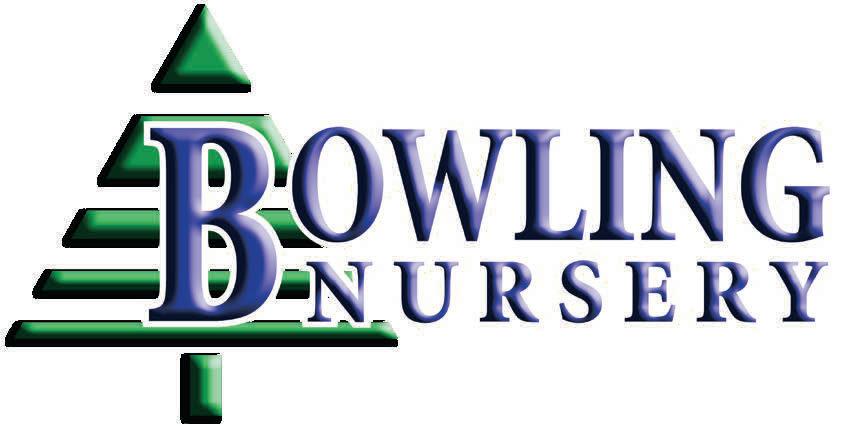
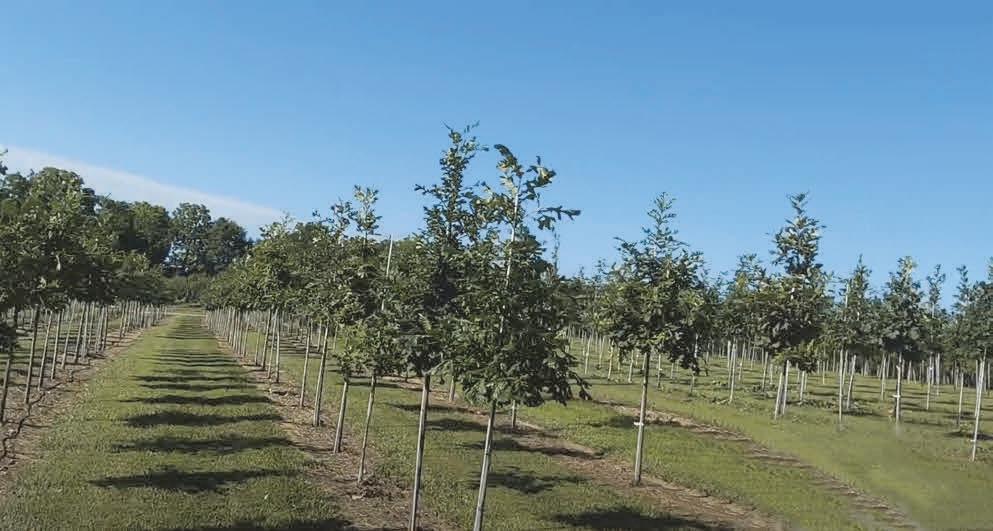

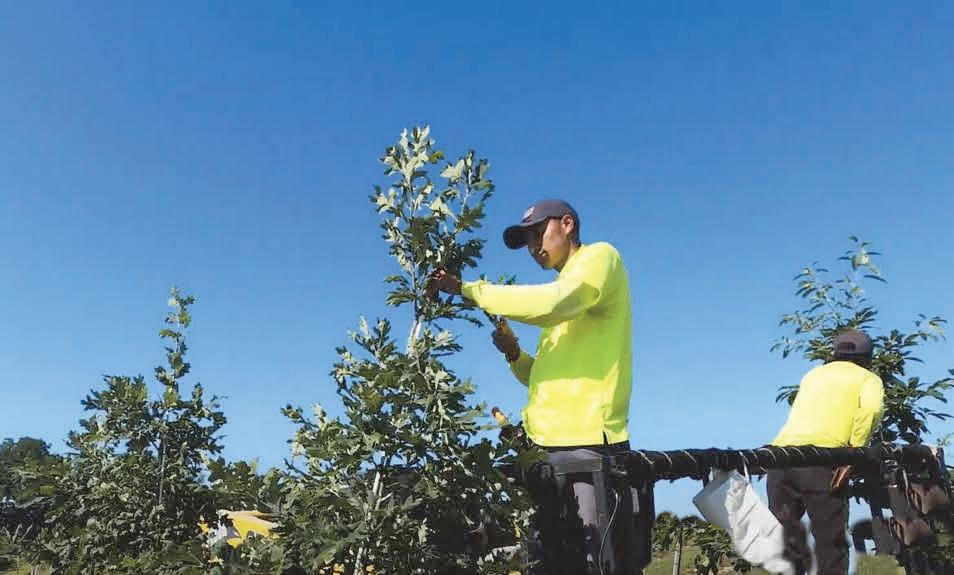


 Trimming boxwoods by hand.
Trimming boxwoods by hand.
We have 40,000 trees & shrubs in the ground. We make our own deliveries. Welcome to our Farm & Nursery. 2814 Todd’s Point Road | Simpsonville, KY 40067 502.722.5516
Pruning trees by hand.
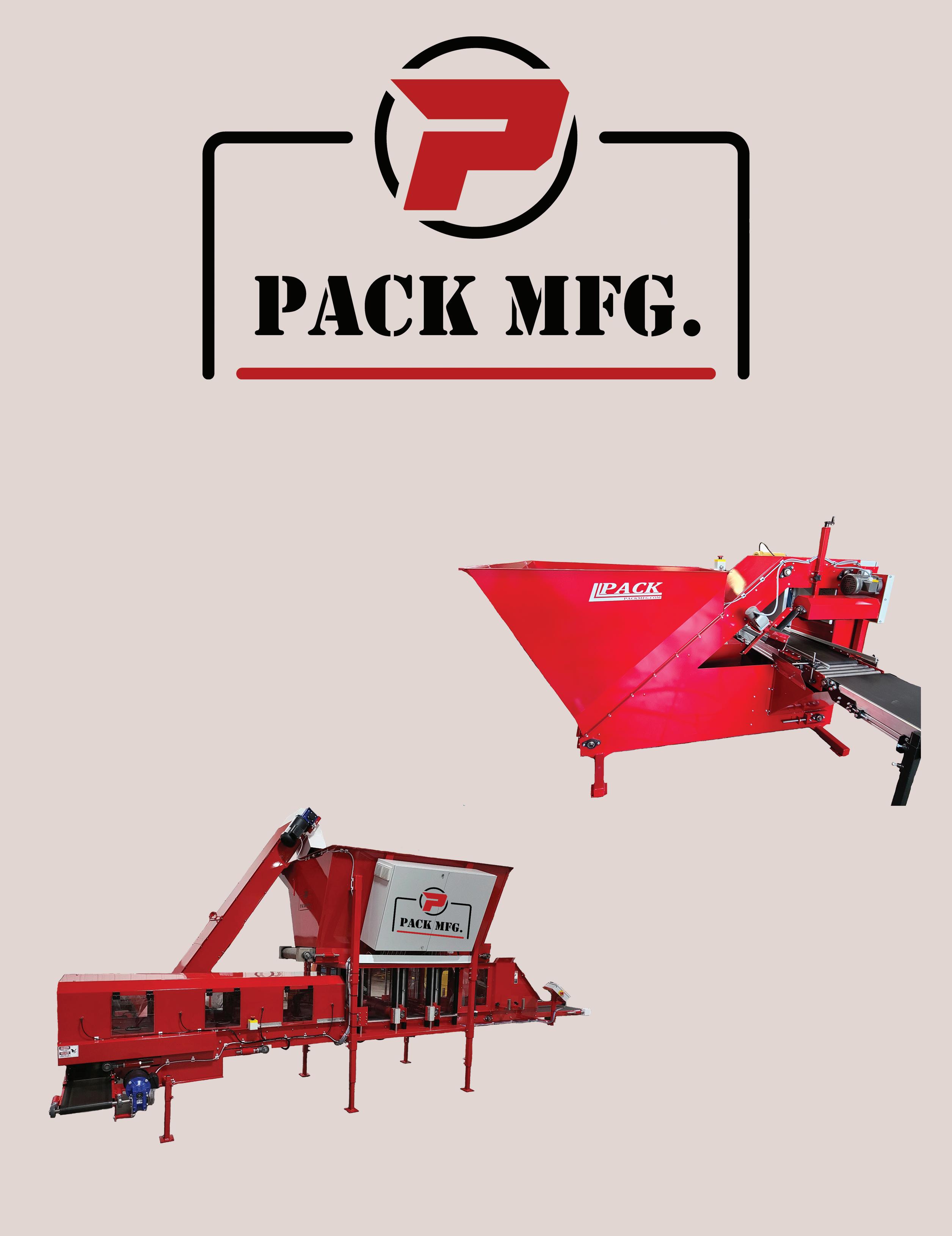




















































































































 Trimming boxwoods by hand.
Trimming boxwoods by hand.







